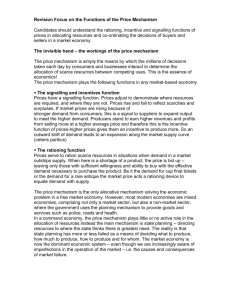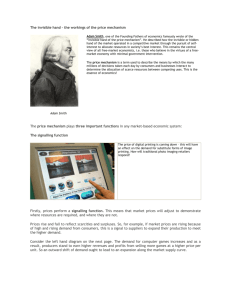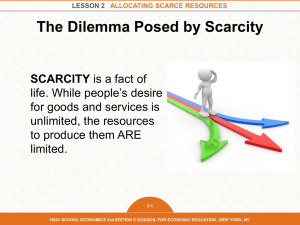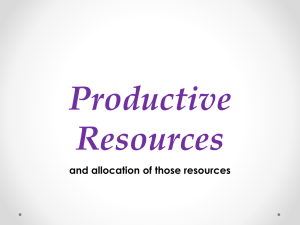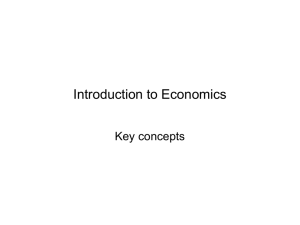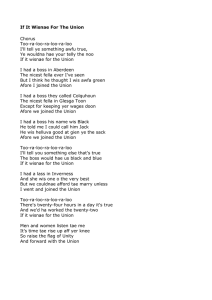Price Mechanism: Signaling, Allocation, Rationing
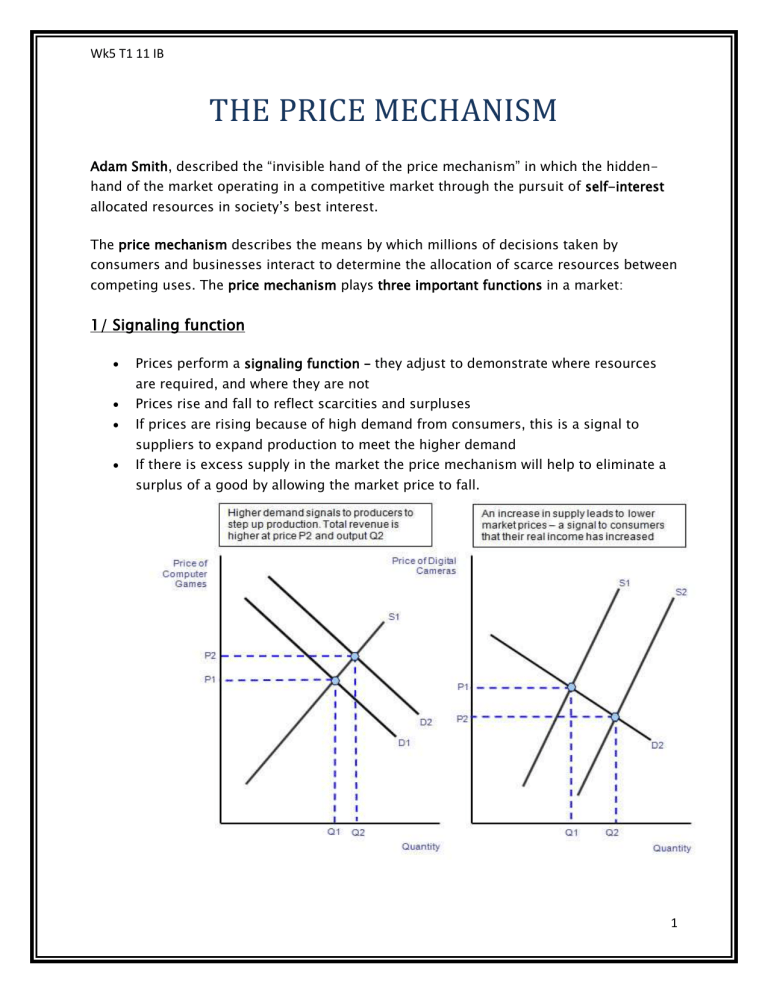
Wk5 T1 11 IB
THE PRICE MECHANISM
Adam Smith, described the “invisible hand of the price mechanism” in which the hiddenhand of the market operating in a competitive market through the pursuit of self-interest allocated resources in society’s best interest.
The price mechanism describes the means by which millions of decisions taken by consumers and businesses interact to determine the allocation of scarce resources between competing uses. The price mechanism plays three important functions in a market:
1/ Signaling function
Prices perform a signaling function – they adjust to demonstrate where resources
are required, and where they are not
Prices rise and fall to reflect scarcities and surpluses
If prices are rising because of high demand from consumers, this is a signal to suppliers to expand production to meet the higher demand
If there is excess supply in the market the price mechanism will help to eliminate a surplus of a good by allowing the market price to fall.
1
Wk5 T1 11 IB
In the example on the right, an increase in market supply causes a fall in the relative prices of digital cameras and prompts an expansion along the market demand curve
2
/Allocative Function
- Transmission of preferences
Through their choices consumers send information to producers about the changing nature of needs and wants
Higher prices act as an incentive to raise output because the supplier stands to
make a better profit.
When demand is weaker in a recession then supply contracts as producers cut back on output.
One of the features of a market economy system is that decision-making is decentralised i.e. there is no single body responsible for deciding what is to be produced and in what quantities. This is a remarkable feature of an organic market system.
3/ Rationing function
Prices serve to ration scarce resources when demand in a market outstrips supply.
When there is a shortage, the price is bid up – leaving only those with the willingness and ability to pay to purchase the product. Be it the demand for tickets among England supporters for an Ashes cricket series or the demand for a rare antique, the market price acts a rationing device to equate demand with supply.
The popularity of auctions as a means of allocating resources is worth considering as a means of allocating resources and clearing a market.
2

